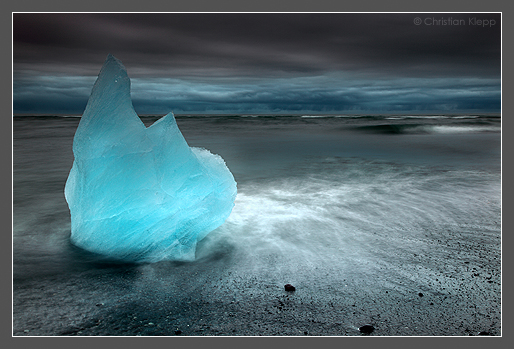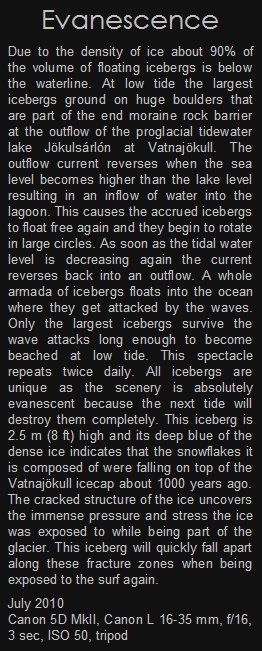

Evanescence
Due to the density of ice about 90% of the volume of floating icebergs is below the waterline. At low tide the largest icebergs ground on huge boulders that are part of the end moraine rock barrier at the outflow of the proglacial tidewater lake Jökulsárlón at Vatnajökull. The outflow current reverses when the sea level becomes higher than the lake level resulting in an inflow of water into the lagoon. This causes the accrued icebergs to float free again and they begin to rotate in large circles. As soon as the tidal water level is decreasing again the current reverses back into an outflow. A whole armada of icebergs floats into the ocean where they get attacked by the waves. Only the largest icebergs survive the wave attacks long enough to become beached at low tide. This spectacle repeats twice daily. All icebergs are unique as the scenery is absolutely evanescent because the next tide will destroy them completely. This iceberg is 2.5 m (8 ft) high and its deep blue of the dense ice indicates that the snowflakes it is composed of were falling on top of the Vatnajökull icecap about 1000 years ago. The cracked structure of the ice uncovers the immense pressure and stress the ice was exposed to while being part of the glacier. This iceberg will quickly fall apart along these fracture zones when being exposed to the surf again.
July 2010
Canon 5D MkII, Canon L 16-35 mm, f/16, 3 sec, ISO 50, tripod




















